Translating a memoir penned by a former British RAF POW interned on Innoshima Island: An opportunity to reflect on peace from various perspectives
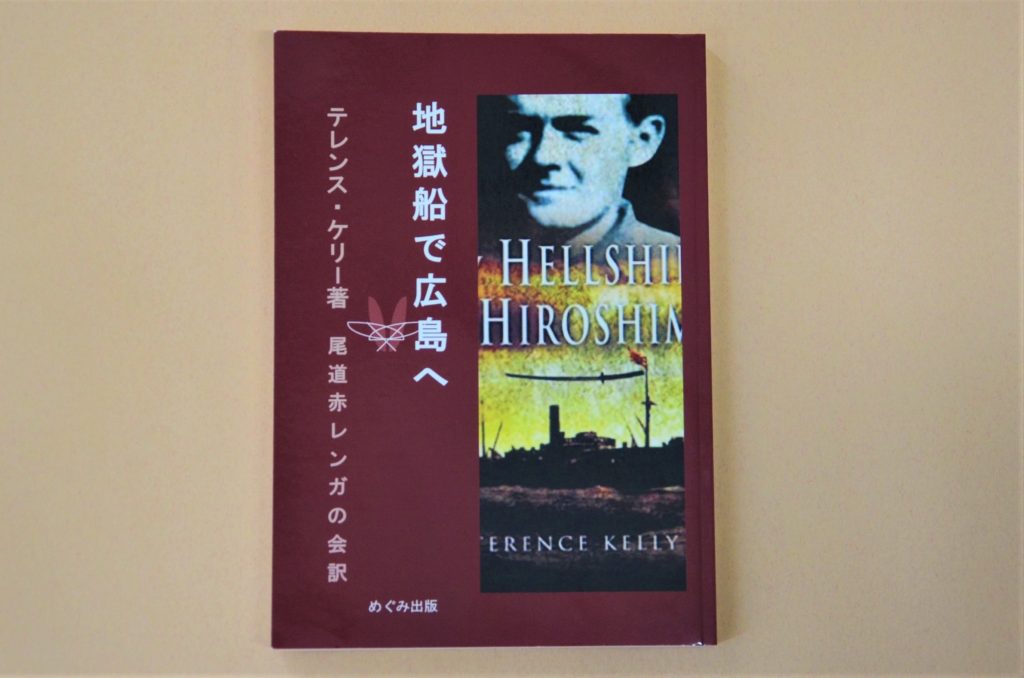
Terence Kelly, a British soldier, was captured by the Japanese army in Java, Indonesia, and forced to live and work as a POW for nearly three years at a camp on Innoshima Island in Onomichi City, Hiroshima. His memoir has been translated into Japanese by the Onomichi Red Brick Society, an organization that has continued to communicate with former POWs, and it was published in 2021 under the title Jigokusen de Hiroshima e (By Hellship to Hiroshima). We spoke to Kobayashi Koshi, who had liaised with Kelly directly about the publication of this book, as well as Mizobuchi Naoko, who was in charge of part of the translation. Okano Makoto, an Innoshima native, also took us on a tour of the places connected to this episode in Japanese history.
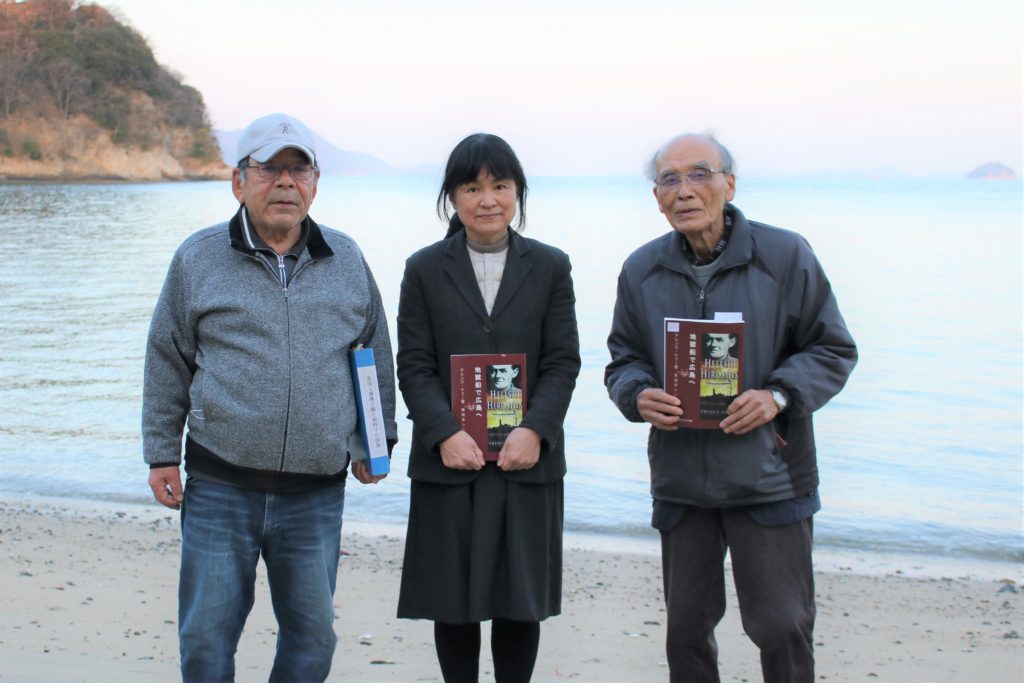
Okano Makoto, Mizobuchi Naoko, and Kobayashi Koshi (left to right)
Did you know that there were two POW camps in Hiroshima Prefecture during World War 2? At that time, around 130 internment camps had been set up across the country in places such as coal mines, mines, and shipyards. Within Hiroshima Prefecture, camps were set up on Innoshima Island and Mukaishima Island. Around 200 British POWs were interned on Innoshima Island, while around 210 interned British, American, and Canadian POWs had been made to work on shipyards on Mukaishima Island.
Terence Kelly was one of the British Royal Air Force POWs who were captured in Java in March 1942. He was subsequently transported to Innoshima Island by the POW passenger ship Dainichi Maru over a period of four weeks. However, the sanitary conditions on the ship were so appalling that many POWs died one after another, and their bodies were tossed into the sea. Life aboard the ship was hell. Upon reaching the camp on Innoshima Island, Kelly was assigned transportation duties and forced to engage in manual labor such as repairing crane tracks and transporting sleepers. He also had to evade the bombs that were dropped during air raids on Innoshima Island that took place in March and July 1945. Kelly was eventually released in September 1945, shortly after the end of the war, and he returned to his home country to work as a businessman and writer. In 2006, he published By Hellship to Hiroshima, a vivid account of his time as a POW.
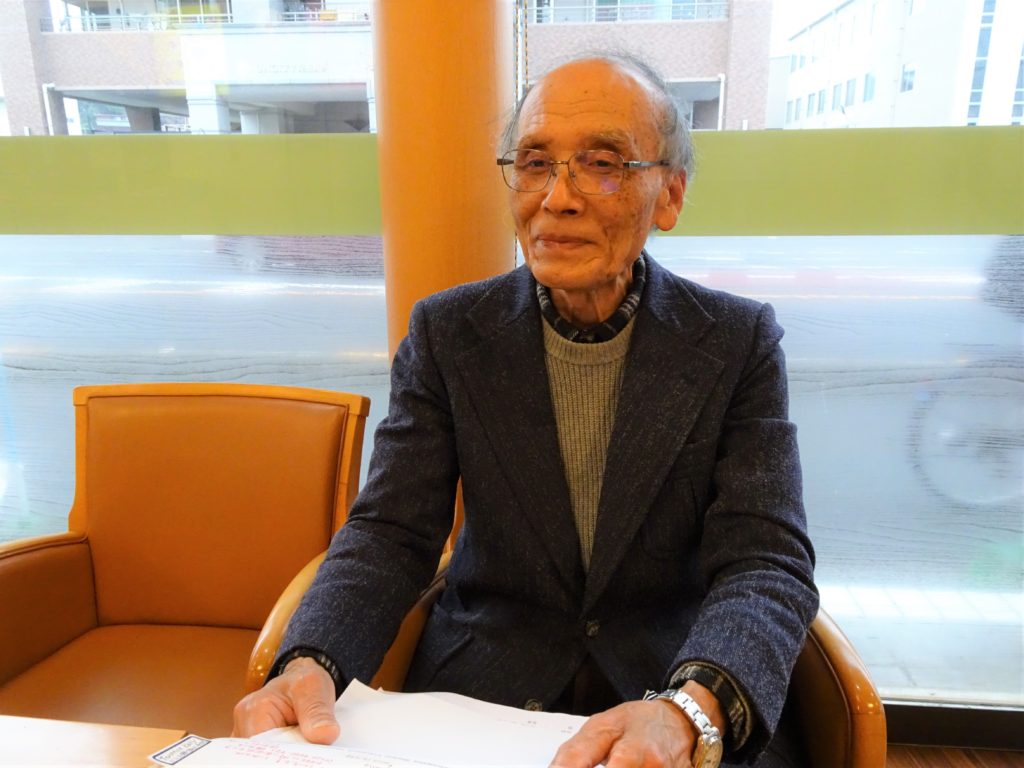
Kobayashi, a close friend of Kelly
The Japanese translation of By Hellship to Hiroshima was a project conceptualized by Kobayashi Koshi, Minamizawa Mitsuo, and Aoki Tadashi of the Onomichi Red Brick Society, a civic group that had previously come together to erect a monument commemorating the POW camp on Mukaishima Island. Aoki, who was conducting research on the air raids on Innoshima Island in the fall of 2012, explained that this translation project came about because he discovered Terence Kelly’s book contains many details about the aid raids on Innoshima Island, and he thought it would be a good idea to translate it into Japanese. As someone who had been in touch with Kelly for a long time, Kobayashi played the role of mediator and began liaising with Kelly through letters. “I received an affirmative response from Kelly a week later, who told me enthusiastically that it would be great if we could share the truth with more people, adding that he will let us know if there’s anything we are unsure about,” Kobayashi recalls.
The translation project began in 2013, and the work was divided between Mizobuchi Naoko, Wakamatsu Eiji, and the project’s founding members Minamizawa and Aoki. “I got really emotional when I was doing the translation. As a Japanese, I felt really sorry for what happened to him. I had to think very hard about how I was going to translate and convey Kelly’s feelings. I used several different types of dictionaries to look up even the words I know one by one,” recounted Mizobuchi, who was in charge of translating Chapters 10 and 13.
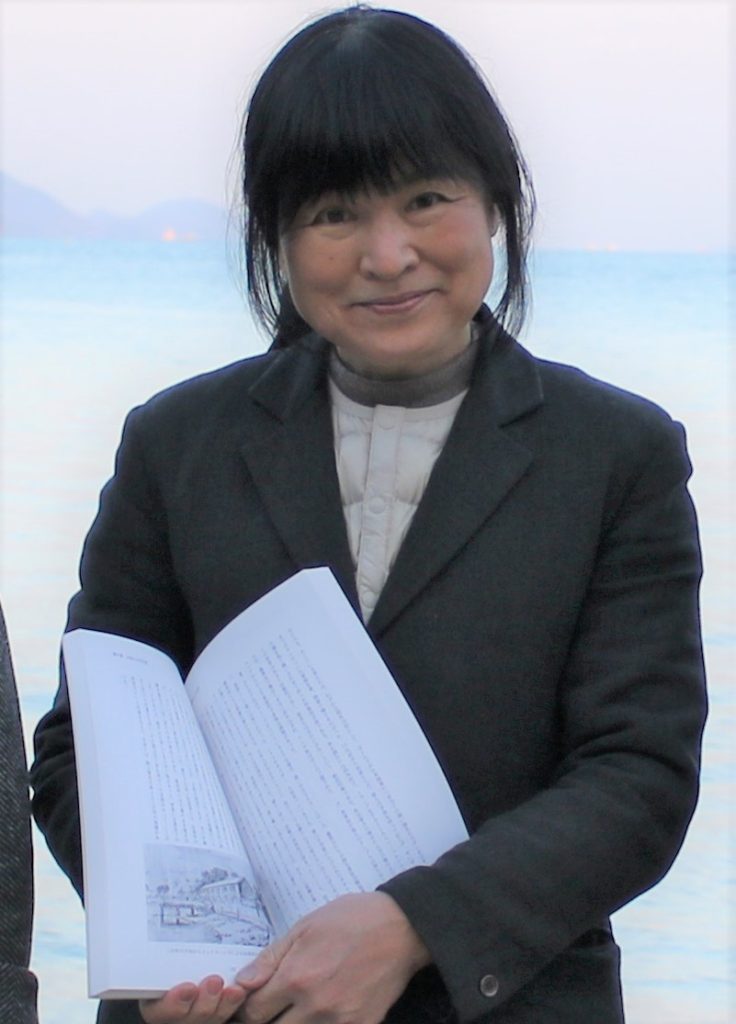
Mizobuchi, who was in charge of translating Chapters 10 and 13
Since the translation was a collaborative effort between four translators, a lot of time was spent on ensuring that the terms were translated in a consistent manner. Jigokusen de Hiroshima e, the Japanese translation of By Hellship to Hiroshima, was finally completed in July 2021, more than eight and a half years after the project was initially conceived. “The book contains vivid descriptions of Japan from the perspectives of British POWs and of their relationships with Japanese people during the war. It is a book that offers us much food for thought. I hope that it can help people think more deeply about war and peace,” Mizobuchi explains. Unfortunately, Kelly passed away in September 2013, so he was unable to witness the completion of the translation. However, Kobayashi was optimistic about its impact. “Schools teach about the war but not about POWs. The truth about what happened should always be taught, regardless of whether it is good or bad. While this may be a negative legacy of Japan, I would like people to learn about the historical reality of what the Japanese military did and draw on this knowledge to promote peace,” he points out.
While the POW camps on Innoshima Island and Mukaishima Island no longer exist today, there are still many sites connected to POWs that anyone can visit on the islands. Here are some sites that we were introduced to.
(1)Site of the former Innoshima POW Camp (Innoshima Island)
This is now a residential area, and there is no remaining trace of the buildings from the past. However, you can find a sketch of the Innoshima POW Camp drawn by one of the POWs interned here.
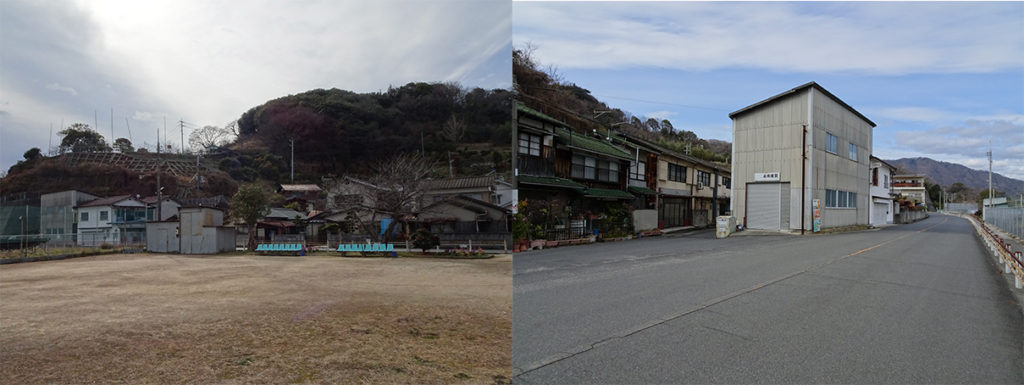
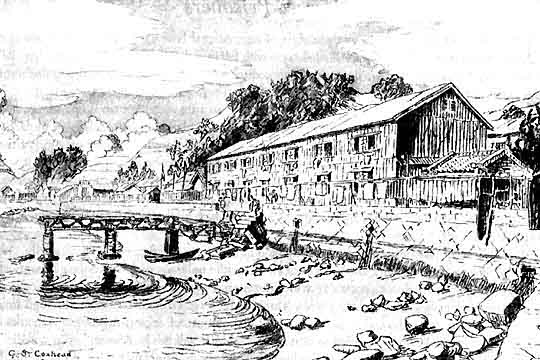
(2)Oriko Beach (Innoshima Island)
This is the beach where the POWs had taken a sea bath in September 1945 after they were finally liberated. The beach had looked almost the same as it does today, and you can see the delight on the faces of the POWs who knew that they could soon return home.


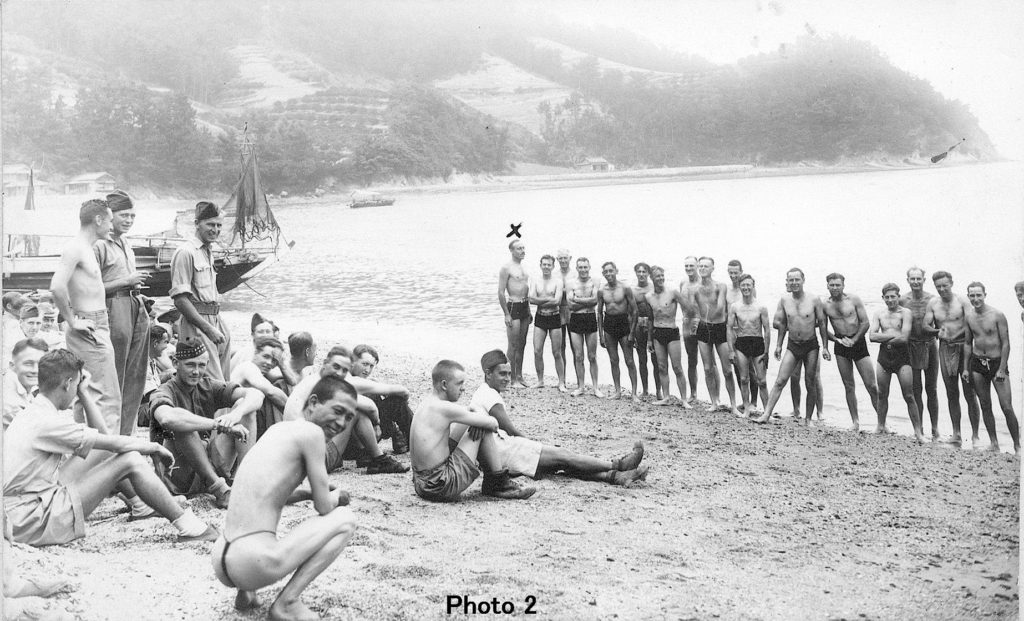
(3)Muryoji Temple (Innoshima Island)
Near the center of the cemetery, where around 200 gravestones can be found, is the site of a public cemetery where a 120cm-tall Amida Nyorai statue has been erected. British POWs who died on Innoshima Island during the war have been lain to rest here, and it is said that around 30 bereaved family members and former POWs who had been interned have visited the cemetery so far.
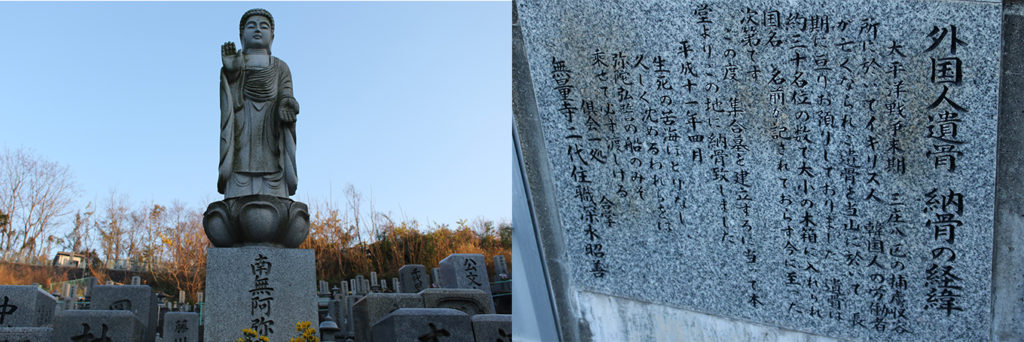
(4)Site of the former Mukaishima POW Camp (Mukaishima Island)
The building that used to be the internment camp was demolished in 2012, but a red brick wall that used to be part of the building remains on the premises of the supermarket Every Mukaishima today, along with a memorial plaque commemorating the American and British soldiers who had died in the camp.
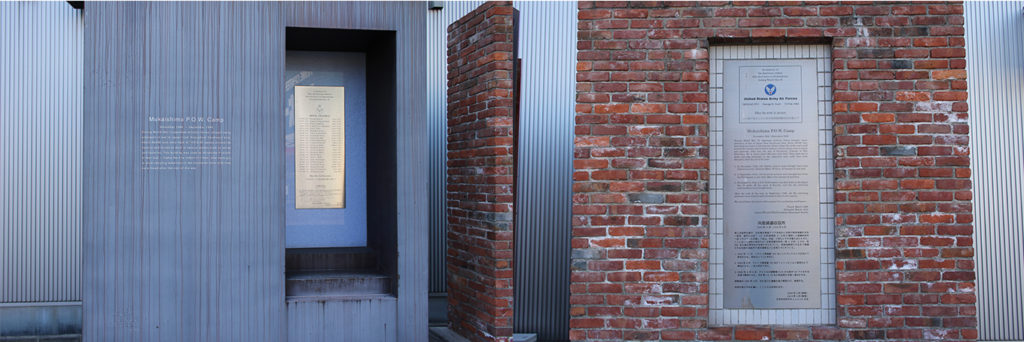
● Jigokusen de Hiroshima e by Terence Kelly, translated by Onomichi Red Brick Society. 2,200 yen.
This title is available on Amazon as well. *The Kindle version (e-book) is on sale at 1,100 yen.
https://www.amazon.co.jp/dp/4802080069/ref=as_sl_pc_as_ss_li_til?tag=innoshimalink-22&linkCode=w00&linkId=553958368618b5639c3c7064ebf7918b&creativeASIN=4802080069
●Onomichi Red Brick Society
https://w.atwiki.jp/akarenga/
Tags associated with this article



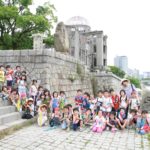
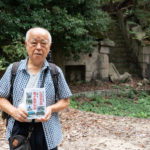
-150x150.jpg)


